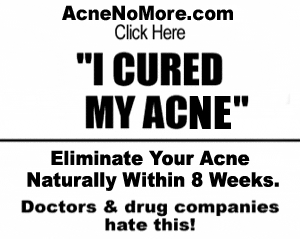Understanding the Prevalence of Acne
Acne, the most common skin disorder in the United States, is estimated to affect approximately 85% of Americans. Contrary to popular belief, acne is not limited to teenagers but can persist into adulthood, often leading to self-esteem issues. While numerous remedies are available, individuals dealing with acne may wonder about the best course of action.
The Role of Genetics and Hormonal Fluctuations
Dermatologists attribute the development of acne to genetics and hormonal fluctuations. These factors explain why acne is commonly observed during puberty, pregnancy, and menopause. Although there are claims linking acne to chocolate and greasy foods, dermatologists have not established a definitive connection. Recent research, however, highlights the impact of a specific food group on acne outbreaks: dairy products.
Visir: Medical Advances Make Acne Scarring a Thing of the Past
Dairy Products and Acne Outbreaks
A study conducted by a team at Harvard and published in the Journal of the American Academy of Dermatology revealed the link between dairy consumption and acne. The researchers examined the habits and diets of nearly 50,000 individuals, focusing on their dietary choices during high school. The findings indicated that those who consumed three or more cups of milk per day were 22 percent more likely to experience severe acne compared to those who consumed one serving or less per week.
Interestingly, skim milk exhibited the strongest association, while cream cheese and cottage cheese also showed a correlation with acne outbreaks. On the other hand, chocolate and greasy foods did not display a significant impact. The researchers attributed the connection between dairy and acne to hormones present in milk, consistent with previous studies.
The Significance of Dairy Intake
It is worth noting the considerable disparity in dairy intake among the study participants. Students who consumed three cups of milk daily had a 22% higher likelihood of experiencing severe acne compared to those who consumed one serving weekly. This discrepancy in daily intake had a profound impact on the severity of acne experienced by individuals in the higher intake group.
Given the varied reactions individuals can have to specific foods or medications, this study emphasizes the influence of diet on acne breakouts. Although dermatologists have conflicting opinions regarding the relationship between chocolate, greasy foods, and acne, personal experiences suggest that these factors can indeed exacerbate outbreaks. If you suffer from acne, it is crucial to monitor your diet to identify potential trigger foods.
Keeping a Food Log to Identify Acne-Causing Foods
To determine which foods contribute to your acne outbreaks, it is advisable to maintain a detailed food log. While this may seem like a straightforward task, it requires diligence to ensure accurate documentation. Pay particular attention to processed and unnatural foods. For instance, eating carrot sticks is unlikely to cause an outbreak, whereas consuming a large bag of Sour Cream and Onion Ruffles might. Based on personal experience, I noticed a pattern where consuming a chocolate bar often led to an outbreak within 1-2 days. When maintaining your food log, be vigilant about identifying these patterns. If you consume a significant amount of dairy products, consider closely monitoring your intake in this area and adjusting your diet accordingly. Remember to consult with your doctor or dermatologist if the issue persists.
Achieving Lasting Clear Skin
Instead of wasting money on ineffective quick fixes such as drugs, creams, and over-the-counter remedies, discover an all-natural solution that offers a permanent acne elimination breakthrough. Put an end to acne-related frustrations and uncover the truth about achieving the clear skin you deserve. Click Here --> [AcneNoMore.com]


















0 Comments